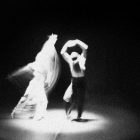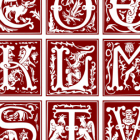THAT LIT, LIT LIFE (with global characteristics) 10 (of 14)
So Kwame Senu Neville Dawes landed on our shores—from one island to another, Jamaica to Hong Kong—except that this being that lit, lit life, he came via Nebraska. But of course, where else would a Ghanaian-Jamaican writer who ROCKS fly from if not Lincoln, Nebraska?
He wowed our MFA writers (and members of the university community and public) at the Run Run Shaw Creative Media Center of CityU with his reading the first evening and lecture the next day.
His latest poetry collection Wheels casts the poet’s observant eye over our world, in all its shame and glory, a world Kwame Dawes excoriates and celebrates, a world he struggles to come to terms with.
Must read, must read! One of my favorite poems is “Rituals Before the Poem” which opens with these lines:
Before the poem comes like a word from a brazen sky
the poet must lie on his side for a year
eating only dry bread and measured bowls of water.
It was a great start to our CityU MFA “mini-residency”—three full days (plus one evening) of intensive, generative writing workshops. This time the theme was “The Personal is the Political, the Poetic, the Public, etc. etc.” which the three international MFA faculty Evan Fallenberg, Suzanne Paola, James Scudamore & visiting faculty Philip Graham interpreted:
Fallenberg – Fiction: From the Personal to the Purposeful
Graham – Mixed Prose: Dreams, Imagination and Observations in Fiction & Nonfiction
Paola – Mixed Genre: Using the Culture & Identity of Food
Scudamore – Mixed Prose: The Way We Live Now
Philip has a new book out, Braided Worlds, co-authored with the anthropologist Alma Gottlieb (also his wife), which is their ongoing cultural engagement with the Beng people of the Ivory Coast. A book I highly recommend and blurbed – In this lively, engaging memoir, Gottlieb & Graham conjure the confluence of multiple experiences and worlds. Their deep connection with the Beng people over the years offers an authoritative and, even more important, a touchingly personal account of life in one West African culture. This book is a wonderful addition to our contemporary creative nonfiction literature, combining the best of immersion journalism, personal memoir and academic study into a delightful and enchanting narrative. This literary journey reminds us, again and again, of the unbreakable bonds of our common humanity.
About “global characteristics” – you honestly do meet the most interesting people.
* * *
But meanwhile, a trip down memory lane back “home” before I head out to Bangkok followed by Kyoto (I’ll spare you my seasonal wardrobe dilemma for these two intriguing writers’ confabs). That you can’t go home again is, at best, creative nonfiction, even though Thomas (not Tom) Wolfe’s (1900-1938) novel of that title purported to be fiction—all about a first time author, one George Webber, who writes a book and well, guess what, pisses off the world he comes from. Here’s an excerpt from Book 3, Chapter 22, “A Question of Guilt”:
He was to become convinced as he grew older that if one wants to write a book that has any interest or any value whatever, he has got to write it out of the experience of life. A writer, like everybody else must use what he has to use. He can’t use something that he hasn’t got. If he tries to–and many writers have tried it–what he writes is no good. Everybody knows that.
So Webber had drawn upon the experience of his own life. He had written about his home town, about his family and the people he had known there. And he had done it in a manner of naked directness and reality that was rather rare in books. That was really what caused the trouble.
I go home, literally as well as fictionally, time and again, to places that used to be home. Unlike Wolfe, I’ve had multiple addresses in the city of my birth.
Here’s the top of the hill towards one address, right round the corner of my neighborhood hairdresser (Joe Tam).
I’ve gone to Joe since discovering him in 1996, when I lived further south, uphill, and continued after moving downhill. Later, after moving back to New York City, I continued to visit on my trips back “home” to Hong Kong, and now that I’m back, once again, he’s still my hairdresser. Loyalty has its rewards. He never sells me anything I don’t need.
Walking further downhill, a skinny “skyscrapper” comes into focus.
My former neighborhood SOHO (South of Hollywood Road) now has way too many skinny new buildings to house the young, global jet set who live here.
I go home regularly to console myself over the erasure of my past, one that becomes ever more a “foreign country” where “they do things differently,” as British novelist L.P. Hartley (1895-1972) said in his book The Go Between.
And no, they don’t do books like these anymore either (cover art by Val Biro):
But I was walking home when the past rudely interrupted.
Here’s my 1997 doorway, little changed, an old 唐 樓 (Chinese style building), a walk up, badly lit, cold in winter, overheated in summer, home to geckos and gigantic spiders, especially when the open air food market on Staunton Street still existed, from where I could buy vegetables, meats, paper offerings for ghosts, even live chickens, until SARS hit.
38 Aberdeen Street. Someone still lives there (at probably double my rent)—the mail still spills out of the boxes. My giant mailbox is gone, the one for large manila envelopes with paper manuscripts and magazines (remember??).
The Hungry Ghost Festival used to happen every summer in the square up above.
Ghost home now.
* * *
Back again November 15.



